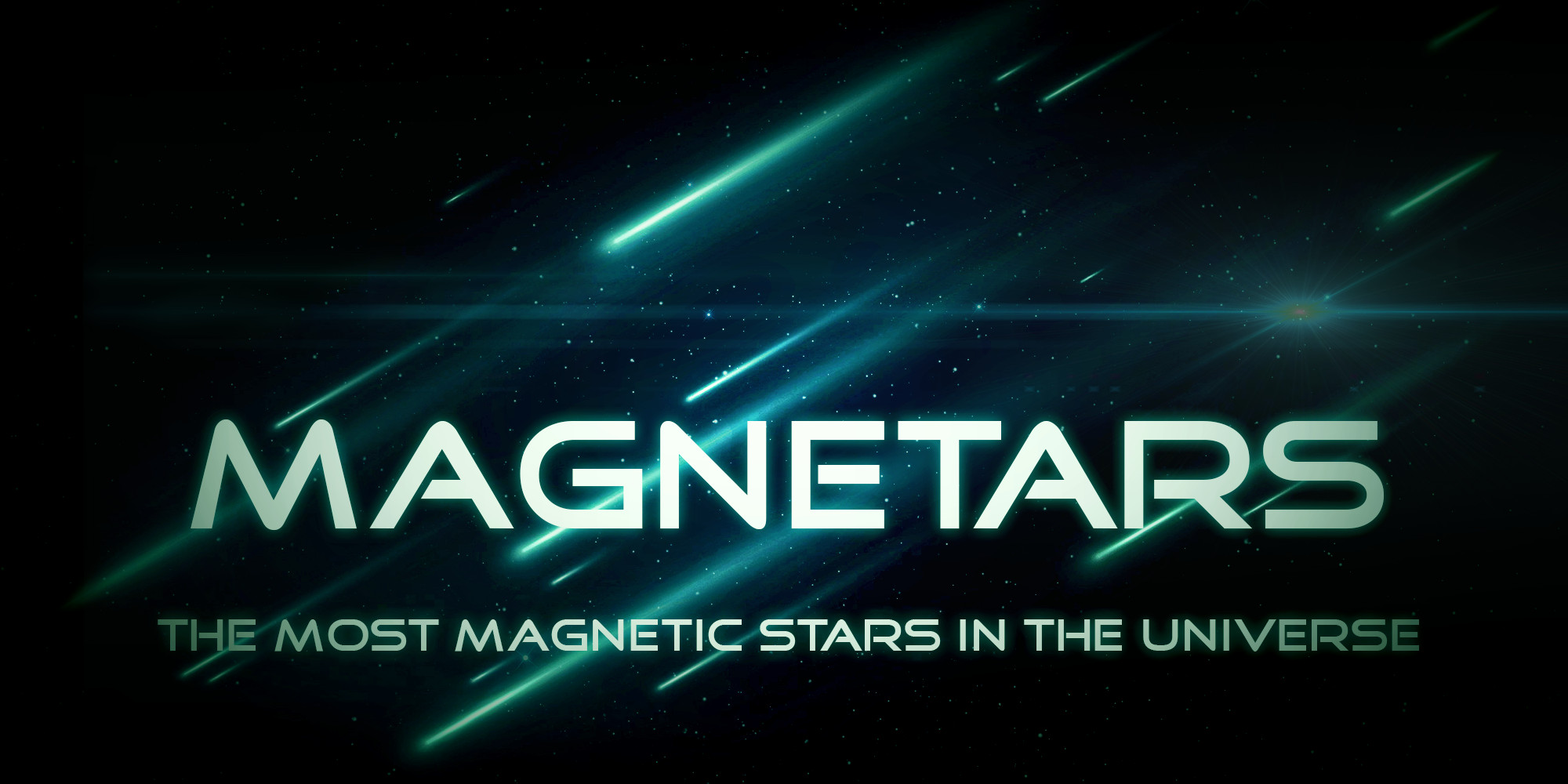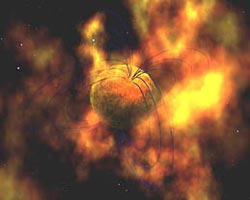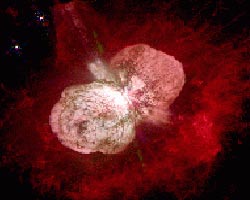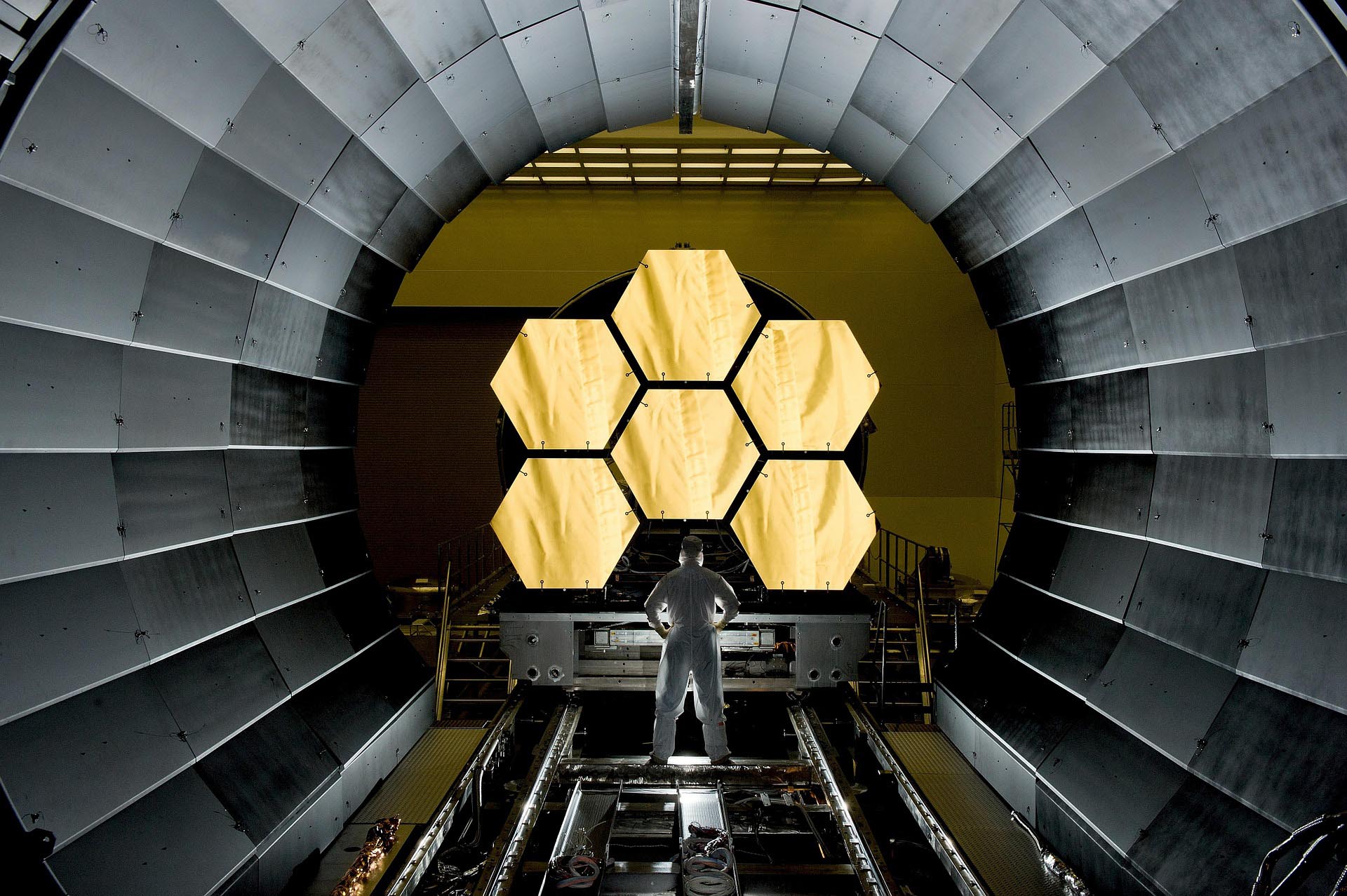






|
Ultra-powerful magnetic neutron stars play hide-and-seek with astronomers. They're known to erupt without warning, some for hours and others for months, before dimming and disappearing again.   Using RXTE, astronomers can study how gravity works near black holes and observe changes in X-ray brightness that last for a thousandth of a second, or for several years. They also can monitor explosive wavelengths not able to be seen in visible light.Eta Carinae is an extremely massive star in our galaxy, and an extremely unstable one. Since 1996, a science team has been monitoring the X-ray flux from this region using RXTE. As RXTE continues to provide the first detailed monitoring of the X-ray emissions of Eta Car, coordinated observations are helping answer many scientists' questions. HST Image Credit: Jon MorsAstronomers will be able to study this violent and bizarre space phenomenon in greater dimension when NASA's Swift Gamma-Ray Burst Explorer is launched in mid-2004. Swift will be about 20 times more sensitive to magnetar bursts than any other satellite. This research project is a cooperative endeavor between NASA's Marshall Space Flight Center, the National Space Science and Technology Center and several Alabama universities. A
neutron star, located 40,000 light years away, is
generating the most intense magnetic field yet observed in the Universe
at over 1 x 1014 Gauss! In contrast, the Earth's
magnetic field varies from .25 to .65 Gauss, making the field strength
of a so-called "magnetar" one thousand trillion times stronger. "The
magnetic field generated by this star is truly incredible," Kouveliotou
said, "It is so intense that it heats the surface to 18 million degrees
Fahrenheit." Their finding confirms the existence of the magnetar as a class of neutron stars. Neutron stars themselves, the tightly-packed neutron cores of exploded stars, have very strong magnetic fields but a magnetar has fields 100 times stronger. "The magnetic field generated by this star is truly incredible," Kouveliotou said, "It is so intense that it heats the surface to 18 million degrees Fahrenheit. Periodically, the field drifts through the crust of the neutron star, exerting such colossal forces that it causes a "starquake." The "starquake" energy is then released as an intense burst of low-energy gamma-rays."Objects that emit these bursts of gamma-rays are called Soft Gamma Repeaters. When they burst, they can give off as much energy in a second as the Sun does in an entire year! The magnetar RXTE observed, also known as SGR 1802-20 (SGR being short for Soft Gamma Repeater), was first discovered because it gives off soft gamma-ray bursts.The very first Soft Gamma Repeater was observed in 1979. Their origin has been debated ever since. With this discovery by Kouveliotou's team, researchers have come to believe that the origin of Soft Gamma Repeaters does indeed lie in the 'starquake' phenomena of magnetars. The magnetar theory was first proposed in 1992 by astrophysicists Dr. Robert Duncan of the University of Texas at Austin and Dr. Christopher Thompson of the University of North Carolina at Chapel Hill. How many neutrons stars fall into this special class? Astronomers believe that at least 10 percent of neutron stars are born with magnetic fields that are strong enough to be considered magnetars. Neutron stars with such superstrong magnetic fields 'brake' or 'cool down' over time, in fact SGR 1806-20, which is observed to be spinning once every 7.5 seconds actually slows down 3 milliseconds every year. "We found that the pulsar was slowing down at a rate that suggested a magnetic field strength of about 800 trillion Gauss, a field strength similar to that for so called magnetars predicted by previous theoretical work," said Kouveliotou. Because of the high field strength, it is very difficult to observe stars like this in radio waves or X-rays. This means there could be thousands or millions of these stars scattered throughout our Galaxy, perhaps even accounting for the large number of observed supernova remnants without detectable neutron stars at their centers. Kouveliotou says, "The importance of this discovery goes beyond just adding a new oddity to the list of star types. It ties together two rare, very peculiar classes of stars we have been puzzling over, and puts the evolution of neutron stars and even galaxies in a new light." She added, "This finding should help us better calculate the rate at which stars die and create the heavier elements that later become planets and other stars." |



